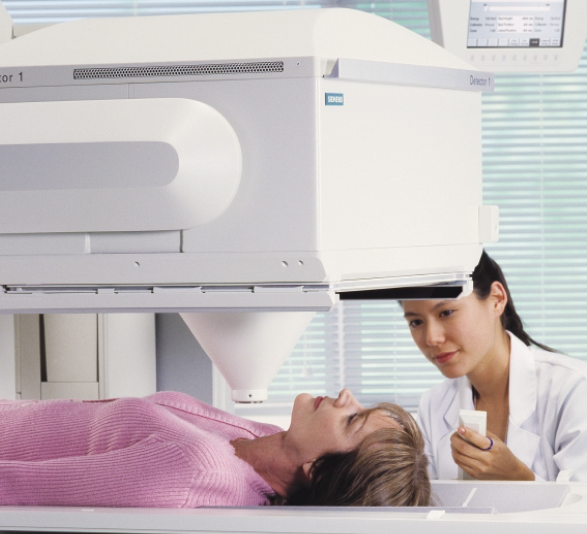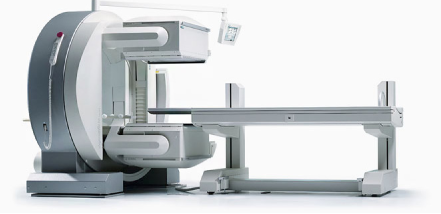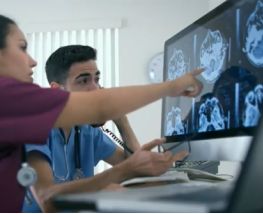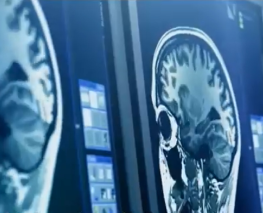 Nuclear medicine is a safe, painless technique for showing the shape, structure, and function of organs (i.e. kidneys, thyroid, soft tissues, and bones) and diagnosing abnormalities therein. Nuclear scans are especially helpful in finding and treating defects in the structure of an organ (such as blockage), pockets of infection (abscesses), unsuspected fractures, degenerative change, or tumors. Nuclear medicine scans often can identify abnormalities very early in the progression of a disease, a time when there may be a more successful prognosis.
A Nuclear Stress Test measures blood flow to your heart muscle both at rest and during stress on the heart. It’s performed similar to a routine exercise stress test, but provides images that can show areas of low blood flow through the heart and areas of damaged heart muscle.
Nuclear medicine is a safe, painless technique for showing the shape, structure, and function of organs (i.e. kidneys, thyroid, soft tissues, and bones) and diagnosing abnormalities therein. Nuclear scans are especially helpful in finding and treating defects in the structure of an organ (such as blockage), pockets of infection (abscesses), unsuspected fractures, degenerative change, or tumors. Nuclear medicine scans often can identify abnormalities very early in the progression of a disease, a time when there may be a more successful prognosis.
A Nuclear Stress Test measures blood flow to your heart muscle both at rest and during stress on the heart. It’s performed similar to a routine exercise stress test, but provides images that can show areas of low blood flow through the heart and areas of damaged heart muscle. 


Bone scans are to help diagnose subtle or hidden bone fractures, such as a stress fracture, that my not show up on a routine X-ray. Bone scans can also help detect other conditions as well such as:
Your doctor may order a bone scan to determine whether cancer, such as prostate, lung or breast cancer, has spread (metastasized) to bone.
An isotope is special ordered for your test. If you need to reschedule your appointment, please call us 24 hours in advance. This will avoid you incurring a cost for the isotope.

Save time! To expedite your process, complete your Registration online through our Patient Portal.

Once your scan is complete, a Radiologist will examine the images. Your physician will receive the images and reports via PACS and fax. Contact your physician directly to discuss your results. Results are also available through the Patient Portal. Allow 3 to 5 business days.